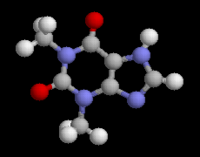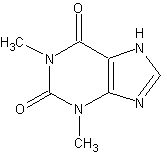Definition
This medication, also known as (Zyloprim), is used for the treatment and prevention of gout attacks and certain types of kidney stones. It is also used to treat elevated uric acid levels in the blood and urine, which can occur in patients receiving chemotherapy for the treatment of leukemia, lymphoma and other types of cancer. If left untreated, high uric acid levels in patients receiving cancer chemotherapy can cause kidney stones and kidney failure.
Description
Allopurinol decreases uric acid levels in the blood and urine by inhibiting a certain enzyme responsible for production of uric acid. It has been used for over three decades for prevention of gouty arthritis, kidney stones, and tumor lysis syndrome in cancer patients.
Recommended Dosage
Adults
Gout
200-300 mg per day for mild gout and 400-600 mg per day for severe gout. Patients greater than 65 years of age should be started at 100 mg per day. Their dose can be increased until desired uric acid levels in the blood are reached.
Children over 10 years of age and adults
Prevention of uric acid kidney stones in cancer patients
600-800 mg per day divided into several doses, usually starting 1-2 days before cancer chemotherapy and stopped two to three days after the chemotherapy is completed for that cycle.
Total daily dose greater than 300 mg should be given in divided doses.
Children less than 10 years of age
Prevention of uric acid kidney stones in cancer patients
10 mg per kg per day of allopurinol in two to three divided doses up to a maximum dose of 800 mg per day. Another alternative is to give 150 mg per day in three divided doses for children 6 years of age and 300 mg per day in two to three divided doses for children 6-10 years of age.
Administration
Allopurinol should be taken after meals to avoid stomach upset. Patients should drink plenty of fluids (at least eight glasses of water per day) while taking this medicine unless otherwise directed by a physician. Drinking a lot of water can prevent formation of kidney stones.
Precautions
The use of allopurinol in pregnant women should be avoided whenever possible because its effects on the human fetus are not known.
Allopurinol should be used with caution by the following populations:
- Patients who have had an allergic reaction to allopurinol in the past.
- Patients who are taking certain medicines for high blood pressure such as diuretics (water pills) or angiotensin converting enzyme (ACE) inhibitors (captopril, lisinopril, enalapril). These people may be at higher risk of hypersensitivity with allopurinol.
- Breast-feeding mothers.
- Children (except those who have high uric acid levels caused by cancer, chemotherapy, or genetic diseases).
Patients should call a doctor immediately if any of these symptoms develop:
- rash, itching, swelling of lips or mouth, trouble breathing (also known as hypersensitivity reaction)
- yellowing of the skin or eyes
- pain when urinating or blood in the urine
- unusual bleeding or bruising
Patients with kidney problems may need to use lower doses of allopurinol.
Patients taking allopurinol will need to see a physician before starting therapy and occasionally during therapy to do blood tests for monitoring of kidney and liver function and complete blood count.
Side effects
Allopurinol is usually well tolerated by most patients. The most common side effect is skin rash, hives and itching. Loss of hair, fever, and feelings of discomfort or uneasiness can happen alone or in combination with a rash. The risk of rash is higher in people with kidney disease or people taking amoxicillin or ampicillin. The use of allopurinol should be discontinued at first sign of a rash. Other side effects include nausea, vomiting, decreased kidney function and drowsiness (especially during the first few days of therapy). Because allopurinol can cause drowsiness, caution should be taken when performing tasks requiring alertness, such as cooking or driving.
Interactions
Patients should consult their doctor before drinking alcoholic beverages; alcohol can decrease the effectiveness of allopurinol. People consuming large amounts of vitamin C can be at an increased risk for kidney stones.
Allopurinol can prolong the effects of blood thinners such as warfarin (Coumadin) and put patients at risk for bleeding. It can also increase chances of low blood sugar with chlorpropamide (Diabinese) and nerve toxicity with vidarabine. Allopurinol can decrease breakdown of azathioprine (Imuran), mercaptopurine (6-MP), cyclosporine (Neoral, Sandimmune) and theophylline (Theo-Dur, Theolair, Theo-24) by the liver, increasing blood levels and side effects. Doses of azathioprine and mercaptopurine need to be reduced when they are used together with allopurinol. Mercaptopurine can be substituted for thioguanine (6-TG) to avoid this interaction altogether.
The use of amoxicillin and ampicillin should be avoided if possible in patients taking allopurinol because of increased risk of rash. Water pills such as hydrochlorthiazide (Diuril) can increase the risk of toxicity and allergic reaction when used with allopurinol.
KEY TERMS
- ACE inhibitors
- A group of drugs used to treat high blood pressure. These drugs work by decreasing production of a certain chemical in the kidneys that causes constriction of blood vessels.
- Gout
- A disease, especially common in men, in which patients may have high uric acid levels in the blood and sudden attacks of severe joint pain and swelling caused by the deposits of uric acid crystals in those joints. These gout attacks most commonly affect the big toe.
- Kidney stone
- A concretion in the kidney made of various materials, such as uric acid crystals, calcium, or lipids. These concretions, or stones, cause severe pain when they are transported from the kidney into the bladder and out of the body.
- Tumor lysis syndrome
- A potentially life-threatening condition caused by cancer chemotherapy associated with very high blood levels uric acid, phosphate, and potassium, low calcium, and acute kidney failure.
- Uric acid
- White, poorly soluble crystals found in the urine. Sometimes uric acid forms small solid stones or crystals that are deposited in different organs in the body, such as the kidney. High levels of uric acid can be seen in patients with gout or cancer.



